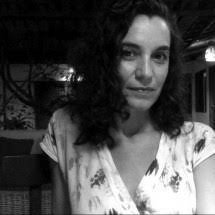María Iñigo

In 2022, 41 contemporary art curators, researchers, and museum directors from 24 different countries were awarded to attend the CIMAM 2022 Annual Conference. The CIMAM 2022 Annual Conference, titled "The Attentive Museum. Permeable Practices for a Common Ground", was held in Mallorca (Balearic Islands), Spain on 11–13 November, hosted by Es Baluard Museu d'Art Contemporani de Palma.
María Iñigo's Conference Report
Attending the 54th Annual Conference was a great opportunity. On the one hand, the fact that this conference has been held in the Spanish context is very important for state professionals for whom working at the international level implies a much higher cost than for our European colleagues. This is due to economic conditions and lack of support. It is difficult to see Spanish researchers at most international academic or artistic events. On the one hand, our peripheral southern European position means that our work here has much less visibility, but on the other hand, and above all, we do not have institutions that are committed to our international projection as is the case in other countries. Therefore having access to an international professional context is extremely significant.
Likewise, the conditions created by CIMAM have to do with professional horizontality, which is very healthy for professionals who work outside institutions in the context of the State. This implies considering the place of academics and independent curators in dialogue with institutional programmes, as actors in the scene where museums operate, something often overlooked by the museums themselves. Creating spaces of coexistence implies opening up spaces of interlocution beyond the conventional and anecdotal use of theoretical and academic work, where our perspective is included in a way that is impermeable to their policies and curatorial research projects. For all these reasons I consider that these grants and this space created at CIMAM help to create spaces of permeability and visibility that are very necessary.
In terms of content, The Attentive Museum conference was aligned with this idea, giving a very important place in the panels to artists and actors outside the institutional sphere. In most cases, these artists were involved in the creation of collective projects, independent cultural projects (as in the case of the invisible house), or in other cases those who came to replace an institutionality destroyed by armed conflict. This has meant confronting two perspectives in the same space. On the one hand, contexts where institutions are in danger and the most urgent thing is to protect them. This is not only the case in armed contexts but also in those of extreme right-wing policies that threaten the hegemonic centres. On the other hand, the need for a renewal of institutional critique in the countries of the North that can rethink the problems that remain unresolved after the transformative wave created by the new institutionalism developed in recent decades.
In parallel, one of the panels on the second day was especially committed to the postcolonial perspective, the artists Sandra Gamarra and Sethembile Msezane worked on it at the level of historical narrative, the curator Clementine Deliss from the politics of access to museums, and in the case of the theorist Denise Ferreira da Silva, from the perspective of the privileged places of production of theory and reception of art. On the one hand in the panel, the presence of the artists was fundamental, which again presents itself as an important statement at the curatorial level of the programme. On the other hand, the dialogue in friction between Deliss and Ferreira da Silva's proposal brings up interesting theoretical questions about privilege and access to collections, with the former failing to recognise the privilege and elitism of her position, while the latter goes to the heart of it by talking about the actors involved not only in the creation and exhibition of art but also in its reception. It is important, in turn, that all the speakers were women, three of them occupying various places of geography and belonging, and therefore of enunciation.
In conclusion, the experience was very positive, the debates were very committed to current problems and the contents went beyond institutional language, something that is very difficult to sustain when events are organised by the institution.